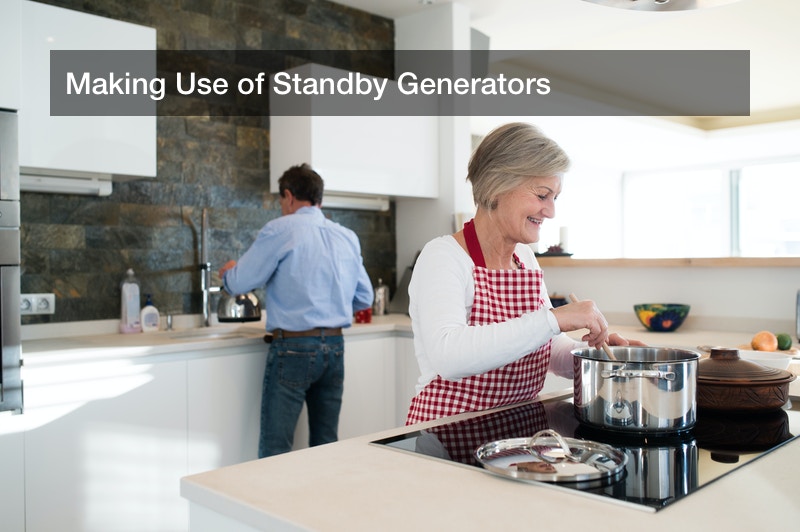
Ever since the late 1800s, humanity has made good use of electricity, and the modern power grid supplies incredible amounts of electricity for residencies and commercial buildings alike. A lot of this power comes from traditional power plants, though some of it also comes from nuclear power plants and green energy sources such as solar panels and wind farms. Regardless of the electricity’s source, though, homeowners and commercial building owners should be prepared for the possibility of a sudden power outage. Such outages are more common than ever, and in some cases, they can be a serious hazard. Fortunately, there are some defenses against sudden outages: standby generators. Whole house generators are fairly easy to find, buy, and install, and whole home generator pricing may be done online or with the aid of a hardware store associate. Emergency generators are standard fare for major commercial buildings such as hospitals (for obvious reasons), but homeowners don’t have to miss out on the benefits of standby generators.
The Modern Electric Grid and Outages
The American electric grid is actually a rather old one, and in some parts of the nation, power grid hardware is decades old, or nearly a century old. Thus, power outages are more common than in previous decades, and it’s not just mechanical failure that can cause them; bad weather will, too. During an ice storm, a tree branch loaded with ice may break off and fall, and it may strike power lines and cause an outage. Or, lightning may strike. In other cases, a vehicle might crash into a power line’s pole and cause serious damage. Hazards such as these may cause local outages for a few houses, a neighborhood, or even a city block.
Federal data started tracking statistics of power outages since the 1980s, and the numbers show that now, the U.S. electric grid loses power 285% more often than it did back in 1984, when this data was first gathered. These outages can cost American businesses as much as $150 billion per year, according to the Department of Energy, and weather-related causes are the most costly of all.
If a home does not have standby generators, then all utilities shut off, and the fridge and freezer won’t work, either. A homeowner is urged to carefully check all food inside the fridge once the power outage goes beyond four hours in length, and any food that’s too warm (according to a food thermometer) should be discarded. This may be especially prudent in spring and summer. But if that homeowner consults generator installers and calculates their emergency generator installation requirements, they can avoid a scenario like that entirely.
Installing a Generator
What sort of standby generators should a homeowner buy? These generators vary widely in their output, size, and cost, and a homeowner shouldn’t estimate the type that they need. A too-large generator is a waste of money, and a too-small generator can’t provide enough power for the owner’s needs. Instead, the homeowner can add up the wattage of all utilities and appliances that they want to run during an outage, from light bulbs to the HVAC utility to a television and the fridge. As a refresher, 1,000 watts make up a kilowatt, and 1,000 kilowatts constitute a megawatt. With a hard number of wattage in mind, the homeowner can visit online catalogs and/or visit local hardware stores to find a suitable standby generator model for their needs.
The homeowner might need help installing those generators, and take note that for homes in flood-prone areas, it is a good idea to buy a generator that is designed to keep working even when flood waters are present. Meanwhile, once the house’s power is lost for any reason, the standby generators automatically come online and take over, and the transition might be so smooth, the homeowner won’t even notice it (this may vary case by case). What is more, there are smaller, more portable generator models out there too, such as a mini generator ideal for powering a TV set and speakers for a tailgate party. Portable generators are also a fine idea for camping trips where the camper needs electricity for a cabin’s lights, or to power and recharge items such as smartphones or a laptop.

